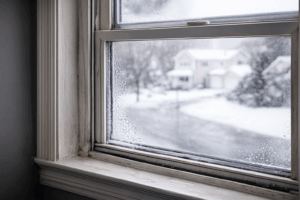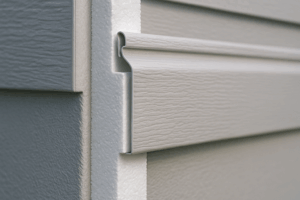Why Many Homeowners Revisit the Storm Door Question
Storm doors aren’t new, but the conversation around them has changed. Today’s entry doors are better insulated, more secure, and more weather-resistant than ever. That leaves many homeowners wondering: Do I still need a storm door? The answer depends on climate, home design, and how you use your entryway.
Understanding the advantages—and limitations—helps you make the best choice for comfort, efficiency, and long-term value.
When a Storm Door Works Best
Storm doors bring a multifunction layer of protection and convenience. For many households, they still offer clear benefits.
Extra Insulation and Winter Comfort
A storm door creates an insulating air layer in front of the main entry door. This added buffer helps reduce heat loss and drafts at the threshold, especially if your current door is older or lightly insulated. Many homeowners notice a cozier entryway during colder months.
Added Protection for the Main Door
Rain, snow, heat, and wind all wear down finishes over time. A storm door takes the brunt of that exposure, helping extend the lifespan of the primary door. This is especially helpful if your main door has a stained or painted finish that you want to preserve.
Built-In Ventilation During Mild Weather
A major benefit is the ability to open the main door and let air flow through a screen while keeping bugs and debris outside. Homes that rely on natural ventilation during spring and fall often appreciate this flexibility.
Noise and Wind Control
A storm door offers a noticeable buffer against wind gusts and outdoor noise. If your home faces a busy road, open space, or frequent seasonal winds, the extra layer can help keep the interior calmer and more stable.
When You Might Skip the Storm Door
Modern entry systems are designed to perform well on their own. In certain situations, a storm door may provide little value—or even be a drawback.
High-Quality Insulated Entry Door Already Installed
If your front door is new, ENERGY STAR-rated, and properly sealed, a storm door might not improve insulation enough to be worth the added cost. Many newer doors already offer excellent thermal performance.
Full, Direct Sun Can Cause Overheating
Homes with a south- or west-facing front door may experience heat buildup behind a storm door. Temperatures can rise high enough to stress certain door finishes. In these cases, a vented storm door or low-E glass helps, but some homeowners choose to skip the storm door entirely.
Minimal Space or a Modern, Clean Look
Small porches or tight entryways can make storm door operation awkward. Some homeowners also prefer a streamlined, uncluttered façade without the extra glass panel.
Energy Efficiency: What You Can Expect
Storm doors can help improve comfort, but they are not a major standalone energy saver. Expected benefits:
- Older or drafty doors: small but noticeable reduction in heat loss
- New insulated doors: light improvement, mostly in comfort
- Homes in windy areas: better entryway stability and fewer drafts
For many homes, comfort and door protection are more significant benefits than direct utility bill reductions.
Durability and Maintenance
Today’s storm doors are made to last, especially when installed correctly.
- Aluminum frames resist corrosion
- Tempered glass increases safety
- Retractable screens reduce wear
- Adjustable closers improve performance in windy areas
Regular checks on hinges, screens, and closers help ensure smooth operation season after season.
Style and Design Choices for a Better Fit
Storm doors no longer look generic. Homeowners can choose from a wide range of options:
- Full-view glass for a clean, modern look
- Mid-view or high-view panels for more privacy
- Retractable screens for flexible airflow
- Low-E glass to manage heat exposure
- Dozens of color and hardware combinations
The right pairing can highlight the primary entry door rather than compete with it.
So—Which Option Is Better for Your Home?
A storm door may be the better choice if you want:
- Extra insulation
- Seasonal ventilation
- Better protection for your entry door
- Reduced noise and wind infiltration
Skipping a storm door makes sense if:
- You already have a premium insulated entry door
- Your entryway receives intense direct sun
- Your porch is too small or you prefer a minimalist look
There’s no universal right answer—just the right fit for your home’s architecture and lifestyle.
Ready to Make the Right Choice for Your Entryway?
Get expert guidance from Midwest Windows, Siding & Doors. Our team helps homeowners choose the ideal storm door or entry door solution for long-lasting comfort, style, and performance.








